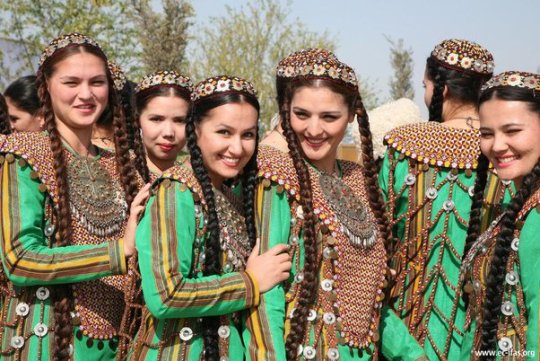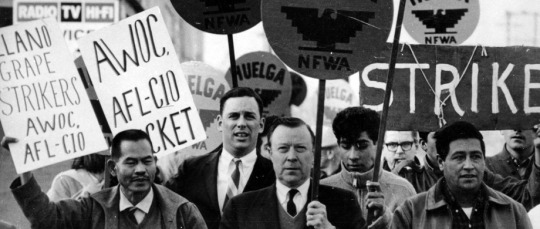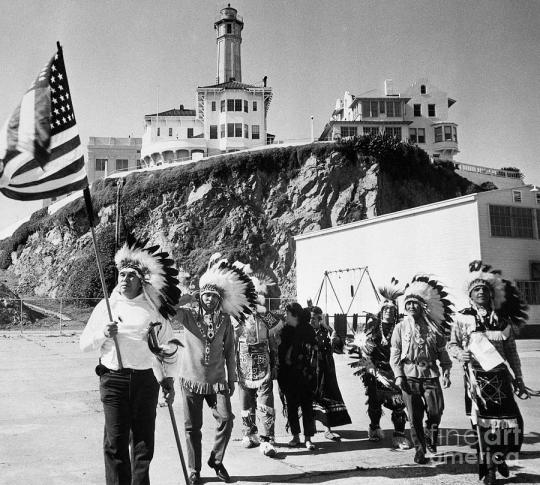#ethnic studies
Text
I love you people going into "useless" fields I love you classics majors I love you cultural studies majors I love you comparative literature majors I love you film studies majors I love you near eastern religions majors I love you Greek, Latin, and Hebrew majors I love you ethnic studies I love you people going into any and all small field that isn't considered lucrative in our rotting capitalist society please never stop keeping the sacred flame of knowledge for the sake of knowledge and understanding humanity and not merely for the sake of money alive
#classics#mythology#ancient greek mythology#ancient roman mythology#comparative literature#latin#hebrew#ethnic studies#fuck capitalism#communism#i love my useless degree idc#academia#university#dark academia#Greek#philosophy#liberal arts#humanities#women and gender studies#cultural anthropology
35K notes
·
View notes
Text
by Jany Finkielstein
The recent massacre of Israeli civilians by Palestinian terrorists on October 7, 2023, has exposed the indefensible belief system these activists try to conceal through their appropriation of social justice jargon. Unabashedly proclaiming their support for Hamas—the genocidal terrorist group that rules the Gaza Strip—they promote the chants of “From The River To The Sea Palestine Will Be Free,” a call for the eradication of Israel and its Jewish inhabitants. CLES activists present false narratives justifying the heinous crimes against innocent Israeli civilians, including raping of women and barbarous acts against children and the elderly, while ignoring the 240 abducted hostages. They promote high school walkouts using students as foot soldiers for their anti-Israel and anti-Semitic ideology.
CAMERA Education Institute has published a report that uncovers the transformation of ethnic studies into a vehicle for promoting anti-Zionist and anti-Semitic indoctrination. It outlines the extreme agenda of its advocates and discloses key figures within the CLES national movement. Recent events have underscored the urgency in exposing this defamation of Israel and the Jewish people, and documenting how the maligned ideology permeates some parts of our educational system and even threatens to destabilize American society.
This shift of Ethnic Studies toward a radical liberated ideology is a departure from its stated intent, which was to provide more space for the experiences of historically disadvantaged racial and ethnic groups in school curricula. Its lack of academic rigor has left it susceptible to manipulation and diversion for political and dogmatic purposes.
In California, the legislature endorsed Ethnic Studies for K-12 public schools in 2019. However, the content and direction of the proposed model curriculum was immediately coopted by the Liberated Ethnic Studies movement that dominated the field at the universities. Rather than highlight the contributions and struggles of various ethnic and racial groups, the focus shifted towards political activism with an anti-Western, anti-Capitalist message.
A very important question to be asked is why a conflict in the Middle East would be such a central part of an American ethnic studies curriculum for these activists? The answer is that anti-Israel activists embedded themselves early on within this liberated movement. Taking on leadership roles, they injected the Israeli-Palestinian conflict into the curriculum and promoted its importance to ethnic studies.
The activists present an inversion of the conflict concealing the historical context of 22 vast Arab states seeking to extirpate the tiny Jewish state and the expulsion of 750,000 Middle Eastern Jews from Arab and Muslim countries in the middle of the 20th century. Missing from any of their lessons are discussions of Palestinian terrorism, the threats that Israeli civilians face every day—a reality that hit home on October 7 with the Hamas massacre. Their account also fails to disclose the multiple times Palestinians rejected opportunities for statehood side-by-side in peace with Israel.
While this radical ideology has been increasingly exposed, its activist proponents continue to hold positions of influence in state education agencies approving and funding K-12 state learning standards and Ethnic Studies initiatives. They belong to teachers’ unions, social justice education organizations, and consulting groups gaining lucrative contracts with public schools around the country. With such a presence in education, these aggressive and committed activists continue to spread their anti-American and anti-Semitic creed.
24 notes
·
View notes
Text
by Max Samarov
Many Jewish groups have sounded alarm bells about LESMCC’s record. Its leadership has smeared the Anti-Defamation League (ADL) as a “white supremacist” group, and its website promoted false claims that erase 3,000 years of the Jewish people’s history in their ancestral homeland.
The group also co-founded the national Coalition for Liberated Ethnic Studies (CLES), together with a close ally who is on record claiming that, “bringing down Israel really will benefit everyone in the world.” The goals of this coalition include opposing the consensus IHRA working definition of antisemitism.
Nevertheless, in 2021, HUSD became one of LESMCC’s first clients and soon published an official policy saying that its ethnic studies curriculum will prioritize “Palestinian narratives.”
When Jews raised concerns and asked to be included as well, the district responded that, “Jewish Studies and Israeli Studies are not part of the Ethnic Studies discipline.”
LESMCC leaders have gone even further, claiming that including Jewish American voices is “arguably racist.” This approach is in conflict with the White House Antisemitism Strategy, the California State Board of Education, and leading ethnic studies scholars such as Ronald Tataki and James A. Banks.
Moreover, teaching controversial issues like the Israeli-Palestinian conflict while intentionally leaving out Jewish and Israeli voices is a clear violation of HUSD’s own policies.
The broader context is even more disturbing. A recent study by the ADL found that “antisemitic incidents in Northern California have jumped by 137% from 2021 to 2022.”
In 2023, HUSD became part of this trend, when a high school teacher was exposed for pushing antisemitic conspiracy theories and even performing the Nazi salute in class. To their credit, non-Jewish students stepped up and spoke out against this hate. However, the district took two months to place the teacher on administrative leave, and has been widely criticized for sweeping the issue under the rug. A few months later, HUSD unanimously approved its latest contract with LESMCC.
33 notes
·
View notes
Link
“The College Board has announced it will begin offering an Advanced Placement (AP) African American Studies course at 60 high schools across the U.S. this fall.
The AP program, which traditionally gives high school students an opportunity to take college-level courses before graduation, currently covers 38 subjects, including U.S. government and politics, biology, chemistry, English, European History and art history.The AP African American Studies course is the College Board’s first new offering since 2014, according to TIME, and the multi-disciplinary course will cover over 400 years of African American history, literature, civil rights, politics, the arts, culture and geography.
Though a pilot program currently, the aim is by the 2024-2025 school year for this AP offering to be the first course in African American studies for U.S. high school students that is considered rigorous enough to allow students to receive credit and advanced placement at colleges across the country.“ -via Good Black News, 9/10/22
#african american#african american history#ethnic studies#ap#ap classes#black history#representation#good news#hope
54 notes
·
View notes
Text
My name is Kofi Montzka, I'm an attorney, wife and mom to three boys, two of which are high school.
This bill requires that schools teach ethnic studies starting in kindergarten, and I'm against this.
You might ask why in the world would a black person speak against ethnic studies. Because not everything that sounds good is good.
The definition of ethnic studies right there in the statute says that there's a connection between a person's race and their stratification. The bill tells kids of color that they are stuck in a caste system based on their race.
It also tells kids, and I quote, "that institutions chronically favor white people and disadvantage people of color."
I'm sick of everyone denying the enormous progress we made in this country, acting like it's 1930. We used to have a race-based system. We got rid of it and now you're all trying to bring it back.
This curriculum will not help kids of color succeed. All it does is remove any reason to try. And I repeat that: it removes any reason to try.
And this is not some theoretical crap, this stuff happens, these messages are very harmful.
Just last month in my high schooler's band class, the teacher took 20 minutes at the beginning of class to talk about "antiracism." He told the kids to look around. And then he said the black boys in the school would likely not live to retirement because of racism and the police.
Another furious kid of color recorded this conversation, and so I was able to hear for myself with my own ears.
If this law is passed, teaching this hopelessness to kids of color will be mandated, starting in kindergarten.
And I can see why you white proponents of this bill might support it. It's not your kids being told that they can't succeed. And you get to shed some of your white guilt in the process.
But you legislators of color, how can you? You made it despite the invisible boogeyman of systematic racism. You were voted in by a majority of white people. You hold some of the most powerful positions in this state. Yet you want to tell my kids and other kids of color that they can't succeed?
It's shameful, it's terrible. I ask that you please vote against this bill. Thank you for this opportunity.
==
Aside from the pretentious academic buzzwords, how do you even tell the difference between woke activism and the policies of the KKK any more?
Like everything woke, what's on the package and what's in the box are very different things.

#Kofi Montzka#antiracism#antiracism as religion#neoracism#ethnic studies#critical race theory#woke is racism#woke#cult of woke#wokeism#wokeness#wokeness as religion#corruption of education#learned helplessness#victimhood#victimhood complex#religion is a mental illness
25 notes
·
View notes
Photo



Are Tajiks more related to Iranians/Afghanis or Kazakhs/Mongolians?
Tajiks are an ethnic group primarily found in Central Asia, particularly in modern-day Tajikistan, Afghanistan, and Uzbekistan. They speak the Tajik language, which is a dialect of Persian (Farsi) and are generally considered to be closely related to Iranians in terms of language, culture, and history.

Tajiks and Mongols are two distinct ethnic groups with different origins and histories. While there may have been some interaction and influence between the two groups over the centuries, there is no significant genetic or linguistic relationship between them.
The Tajik language is a member of the Iranian branch of the Indo-European language family, which is the same branch as Persian (Farsi). The grammar, syntax, and vocabulary of Tajik are similar to those of Persian, and the two languages are mutually intelligible to a significant extent.
Culturally, Tajiks have been heavily influenced by Persian culture over the centuries, particularly during the period of the Samanid dynasty (9th-10th centuries CE), which was based in what is now modern-day Uzbekistan and Tajikistan. The Samanid rulers were Persian-speaking and promoted Persian culture, literature, and art in their territories, which had a lasting impact on the region.
In terms of history, the lands inhabited by Tajiks were historically part of the greater Iranian cultural and political sphere, with ties to various Persian empires and dynasties such as the Achaemenids, Parthians, Sassanids, and Safavids. The region was also influenced by Islamic culture and traditions, which further connected it to the wider Iranian world.
Tajiks and Iranians share a close linguistic, cultural, and historical relationship, with the Tajik people being considered a branch of the greater Iranian cultural and linguistic family.
#tajiks#mongols#asia#central asia#persian#perisan culture#ethnic#achaemenids#parthians#sassanids#uzbekistan#samanid#indo european#kemetic dreams#ethnic diversity#ethnic studies
18 notes
·
View notes
Text
By Struggle-La Lucha New York bureau
New Yorkers answered the call from Students for a Democratic Society for a national day of action for the Tampa 5 on July 12. They gathered during the evening rush hour outside New York City Hall with banners, signs and chants to demand: “Protesting is not a crime, justice for the Tampa 5!”
#Tampa 5#repression#Ron DeSantis#protest#NYC#SDS#USF#Florida#affirmative action#ethnic studies#transrightarehumanrights#redguard#Struggle La Lucha
5 notes
·
View notes
Text
California Jewish Community Continues To Win the Ethnic Studies Controversy
A few years ago, I was heavily quoted in a great Haaretz article titled "How California's Jewish Community Won the Battle Over the State's Ethnic Studies Program". While I had at that point left California, I had previously been heavily involved in the Jewish community efforts to ensure that the ethnic studies curriculum not only did not discriminate against Jews, but also told the full, robust Jewish story as part of the California educational experience. Despite the efforts by some to fear-monger Those efforts were broadly successful, making the California Ethnic Studies battle one of the Jewish community's great victories.
The implementation of the ethnic studies mandate has not been without friction, not the least because some districts are not adopting the model curriculum the Jewish community worked so hard to develop. I haven't been following the ins and outs as closely now that I've left the state, but I still do hear some things. And to the end, I want to share an email I recently received from the East Bay JCRC, addressing "rumors" regarding ethnic studies in the Mountain View Los Altos High School District (MVLA).
The rumors circulating about the ethnic studies program at Mountain View Los Altos High School District (MVLA) have become a cause of concern in the Jewish community. We are in regular communication with district leadership and have made a formal request to review classroom teaching materials. Based on publicly available information, we have so far seen no evidence of antisemitic or anti-Israel content.
The controversy over this curriculum is causing great division in the district, and we have received numerous emails and calls of concern. Unfortunately, the tone of the conversation is hurting families and educators and we are calling on concerned community members to stop reaching out to the district directly and to allow JCRC to continue our work with district leadership. We reject public attacks on the district as counterproductive to our community’s aims at this time.
The email goes on to clarify that, apparently contrary to certain rumors, the ethnic studies curriculum in MVLA does include discussions of antisemitism and Jewish experience and is not currently tied to the so-called "liberated ethnic studies" curriculum. At this point, the email suggests:
Objections to MVLA’s curriculum appear to be ideologically-based, with some questioning the inclusion of concepts such as systems of power and oppression, concepts that are included in the California Ethnic Studies Model Curriculum. While segments of our community may object to teaching these concepts, these concerns are not related to Jewish identity, antisemitism, or Israel, and should not be conflated with anti-Jewish bias.
Why do I flag this email? Because I think it helpfully highlights several trends and activities worth underscoring.
First, it is illustrative of how the institutional California Jewish community has been consistently excellent on this issue -- vigorously advocating for Jewish communal rights, while refusing to give into or endorse fear-mongering or conspiratorial nonsense. They deserve tremendous applause for this -- you and I know full well that is not something that can be taken for granted.
Second, it is laudatory that the statement correctly distinguishes between mere ideological opposition to teaching about things like "systems of power and oppression", and having leveled a colorable claim of antisemitism. Political disagreement with certain frameworks used in ethnic studies is not tantamount to identifying actual antisemitic content. This is not to say that such concepts cannot be deployed in antisemitic ways. But frequently right-wing Jewish critics of ethnic studies skip past that step and simply assert that the existence of these concepts is inherently antisemitic without any need to show actual, particularized antisemitic content (for my part, I have no idea how one could possibly understand antisemitism without conceptualizing it as a "system of oppression").
Third, it highlights how counterproductive ill-informed rabble-rousing around these issues are. It is almost certain that the success of the East Bay JCRC and affiliated groups in creating a healthy ethnic studies framework for the Jewish community is in no small part attributable to the direct relationships and consultations its had with MVLA officials. Those relationships and consultations are strained when a bunch of yahoos bombard the school board with whatever the latest misleading Tablet Magazine screed is. Even in cases of genuine antisemitism, this approach often is wildly counterproductive and harms those it purports to "protect".
Much like the folks who decided the best way to support Berkeley Jewish students was to drive a Hitler billboard truck onto campus, these interventions are not ultimately about trying to improve the climate for Jews. They're accelerationism -- trying to increase the temperature in a bid to hasten the crisis point where things boil over. Just as the last thing that the Berkeley Hitler truck purveyors want is a world in which Jews feel comfortable at Berkeley (if Jews are comfortable at Berkeley, then a heaping pile of right-wing narratives attacking higher education go kaput), the last thing the rabble rousers want in Mountain View is for ethnic studies to be able to comfortably incorporate Jewish perspectives (if it does, the whole narrative that ethnic studies is and must ever be antisemitic falls away).
It is, to reiterate, fantastic that California's Jewish community has not, by and large, fallen into these traps. Good behavior deserves plaudits, and I applaud the East Bay JCRC for the tremendous, superb work they've done on the ethnic studies issue for years now.
via The Debate Link https://ift.tt/LZEvu1n
4 notes
·
View notes
Text
Strikes for Change
By: Jacob Chauvin
Ethnic Studies as we know, can be a sensitive topic to discuss with some, but gives us the cold hard truth about how our country started with diversity, and how we deal with diversity today. Diversity today, is what separates the U.S., from neighboring countries with its unique views, religious practices, and ethnic cultural values. But what did it take to get us to where we are today? Did it take bills? Laws? Amendments? Treaties? All of those are true, but it came down to each ethnic group’s cohesion and strikes to get each distinguishable movement sparked and ignited. The history of ethnic strikes is so important that we understand because it is within these strikes that made everything possible today, for the ethnic groups that battled poverty, discrimination, and social injustices based solely on their appearance and background.
San Francisco State College Strike
It was November 6, 1968, and few would know that this would mark the first day of the longest student strike in American history. Student leaders that attended San Francisco State College Third World Liberation Front marched with their demands for an education more relevant and accessible to their communities (African American, Asian American, Chicano, Latino, and Native American). This was a five-month long battle that engaged all parties involved in the school, police, and even politicians. Stemming from the original basic rights, protestors moved on to demand power and self-determination. The State resisted of course, but that didn’t stop the activists and they held strong. Though this movement didn’t change any economic or political structure, they strongly affected popular ideology and social relations. They also resulted in the formation of mass organizations and produced a cadre of activists who would continue to pursue their ideals.

BSU organizing protests to create equal learning opportunities.
Delano Grape Strike
Not all strikes though, however, were at institutions for education. Strikes were also formed for the ways of Filipino workers and Mexican American workers to get better working conditions in California. One is the Delano Grape Strike, which would change the course for immigrant workers who had to work in intense conditions just so grape farmers can meet the demands of the world. On September 19, 1965, at 430 am in Delano California, 200 Filipinos and Mexicans stood below the NFWA (National Farm Workers Association) offices, holding signs inscribed with one word; “Huelga” (Strike). This strike lasted 5 long years, being disregarded by the Delano Chamber of Commoners. It was 1970 when that fight for the civil rights with Delano agricultural working communities was won. NFWA became a union, changing the name to United Farm Workers.

Delano Grape Strike led by Cesar Chavez and Larry Itilong.
Standing Rock and Alcatraz Strike
Another distinguishing strike was involving the Native Americans at Standing Rock, and Alcatraz. In April of 2016, the Standing Rock Sioux established the Sacred Stone protest camp at the confluence of the Cannonball and Missouri rivers in North Dakota. Companies began pipeline construction, and as a result, the Sioux began a protest because the pipeline’s draft environmental assessment did not address risks to their reservation’s water supply. Alcatraz is seen as a Historic Landmark and works with individuals and organizations to preserve and interpret its long history of activism.

Native American Tribes occupying Alcatraz Island
Conclusion...
Strikes are history, strikes are what bring cohesion and unity amongst the unique ethnic groups involved. It is a way for their voices to be heard in this ever-loud country we live in. Strikes are necessary because if a group does not strike, then how can we be heard?
LEARN MORE BELOW!
youtube
youtube
youtube
Sources:
Epstein, K. K., & Stringer, B. (2022). The Student Strike that Won Ethnic Studies and Black Student College Admissions. Journal of African American Studies, 26(4), 503–513. https://doi.org/10.1007/s12111-022-09598-y
Contemporary Asian America. (n.d.). Google Books. https://books.google.com/books?hl=en&lr=&id=0ygUCgAAQBAJ&oi=fnd&pg=PA25&dq=history+of+ethnic+study+strikes&ots=kTOQuCtrQ3&sig=3WdaRHhIg3m9AA20FDbLvEnIe1o#v=onepage&q=history%20of%20ethnic%20study%20strikes&f=false
Lambert, A. M. (2021). Cesar Chavez: The 1965 Grape Boycott and the 400-Mile Pilgrimage.
Beisaw, A. M., & Olin, G. E. (2020). From Alcatraz to Standing Rock: Archaeology and Contemporary Native American Protests (1969–Today). Historical Archaeology, 54(3), 537-555.
FUNG, C. (2014). “THIS ISN’T YOUR BATTLE OR YOUR LAND”: THE NATIVE AMERICAN OCCUPATION OF ALCATRAZ IN THE ASIAN-AMERICAN POLITICAL IMAGINATION. College Literature, 41(1), 149–173. http://www.jstor.org/stable/24544625
Tintiangco-Cubales, A., Kohli, R., Sacramento, J., Henning, N., Agarwal-Rangnath, R., & Sleeter, C. (2015). Toward an ethnic studies pedagogy: Implications for K-12 schools from the research. The Urban Review, 47, 104-125.
0 notes
Text
nothing wrong with using Percy Jackson as a way to get kids interested in Hellenic myth/culture!
But whenever I see “oh, this is just like in Percy Jackson!” & it’s just something that people 2000+ years ago were talking about—
😅😣🤬
It’s hard being into history as an adult, especially when a lot of the Western world (IDK about Eastern) is all about suppressing the culture of ancient Hellas, Kemet, Nippon & people of color in general…
#admin#history#ancient history#archeology#kemet#ancient hellas#greece#greek myth#hellenic myth#japan#ethnic studies
1 note
·
View note
Text
GOD OF WAR 3 AND SPECIAL FATHER-SON WOUNDS
On this edition of J.T. the L.A. Storyteller Podcast, yours truly sits down for an extensive conversation with the Social Primate Podcast’s Eddie Aguirre. Eddie is a graphic designer by trade and has hosted the Social Primate Podcast since 2017. We discuss Eddie’s roots on the Southeast side of Los Angeles, better known as SELA, the city of Cudahy recently calling for a ceasefire in Gaza, God of…

View On WordPress
0 notes
Text
Some of the leading academics pushing for mandatory ethnics studies courses are ardent anti-Zionists.
Christine Hong, chair of the Critical Race and Ethnic Studies department at UC Santa Cruz, co-chairs the UC Academic Senate working group developing the admissions proposal. She recently co-founded the Institute for the Critical Study of Zionism (ICSZ), which declares on its website that Zionism is a “colonial racial project” and that Israel is a “settler colonial state.”
“The information provided above makes it crystal clear that the UC faculty driving the ethnic studies admission requirement proposal view opposition to Zionism and activism to harm the Jewish state and its supporters as core components of their ethnic studies discipline,” this week’s letter to the UC board states. “They promote antisemitic stereotypes of Jews and the Jewish state and encouragement to antisemitic activism as ‘part and parcel’ of ethnic studies courses at the University of California and beyond.”
Last month, Hong argued during a podcast interview that ethnic studies should teach “the extraordinary violence of Zionism, the settler colonial violence, [and] the militarism that is inflicted on Palestine and Palestinian people.” She added that “a critique of Zionism is part and parcel of the field of [ethnic studies].”
In the same interview, ICSZ’s co-founder Emmaia Gelman said academics should “tie [Zionism] to this much larger Western supremacy and white supremacy” and “de-link the study of Zionism from Jewish studies.”
Hong is also organizing ICSZ’s first conference next month — part of which will take place at UC Santa Cruz — titled “Battling the ‘IHRA Definition’: Theory and Practice.”
The conference will focus on combating the International Holocaust Remembrance Alliance’s (IHRA) definition of antisemitism, which has been widely accepted by Jewish groups and well over 1,000 global entities, from countries to companies. Beyond classic antisemitic behavior associated with the likes of the medieval period and Nazi Germany, the examples include denial of the Holocaust and newer forms of antisemitism targeting Israel such as demonizing the Jewish state, denying its right to exist, and holding it to standards not expected of any other democratic state.
Critics argue that applying double standards to Israel and opposing Israel’s continuation as the nation-state of the Jewish people may not necessarily be antisemitic, creating tighter standards around when anti-Israel speech and activity is antisemitic.
In this week’s letter, the nearly 100 organizations said the ethnic studies admissions requirement’s ideological roots make it “an outrage” and “both wrong and highly dangerous.”
13 notes
·
View notes
Link
AFT President Randi Weingarten’s embrace of intersectionality’s foothold in K-12 classrooms was evidenced last year. In an interviewwith The Jewish Telegraphic Agency on the AFT’s response to the Covid-19 pandemic, Weingarten derided Jews as “part of the ownership class.” This comports with progressive rhetoric that libels Jews as wielding outsize power and influence.
Weingarten has also subordinated the issue of education to attacks on Israeli policy. She called the Jewish state’s 2018 Nation-State Law “despicable” and issued a statement the following year condemning the Israeli government’s decision to deny visas to anti-Semitic congresswomen Rashida Tlaib (D-Mich.) and Ilhan Omar (D-Minn.).
While Weingarten publicly insists that she is against BDS, she does not challenge attempts to malign Israel by local teachers unions. The second-largest teachers union in the U.S., United Teachers Los Angeles (UTLA), considered but ultimately decided to postpone a vote on a pro-BDS motion last year. The move follows an earlier vote by UTLA chapter chairs calling for an end to U.S. aid to Israel and expressing support for BDS.
In other states, the Seattle Education Association and the United Educators of San Francisco have voted to endorse BDS. Weingarten’s excuse for refusing to confront the Israel-hatred emanating from these local unions is based on her false claim made to Anti-Defamation League (ADL) leader Jonathan Greenblatt that a “national union does not override locals over differences or questions of policy.”
23 notes
·
View notes
Text
Killing America - Man of Steele Productions
Full film: Twitter, Substack and Rumble.
https://twitter.com/Hebro_Steele/status/1761471883349004483
For the last several months, I've been working on a 38 minute documentary, "Killing America: Can America's Schools be Saved?" I'm proud to release the trailer today and it is below.
What happened in southern Israel on October 7th shook the world in many ways. Most of us never imagined that the ripple effects would reach our public high schools in America, but they did and what they revealed was a shockingly strong current of antisemitism among teachers, students, and staff.
This comes after years of anti-white and anti-Asian hate. Where was this tribal hatred coming from, especially after 60 years of diversity efforts that promised us unity? That is why I decided to do a deep dive investigation in the Bay Area schools and Killing America is the result.
In the comment section, I will post updates re screenings, locations, and ticket sales.
https://twitter.com/Hebro_Steele/status/1776396571699294718
After enduring a week of unwarranted takedowns of the Killing America trailer on @Youtube and @Vimeo as well as receiving a baseless cease and desist letter that seeks to prevent my documentary from being shown in its original form, I’ve decided to release the full (38 min) version of Killing America on this platform.
Let’s be clear, @TheMAChronicle claims that this is a copyright issue, but it is not. Our work is fully protected by the Fair Use doctrine, which allows us to use even copyrighted footage under certain guidelines. (See explanation in comments section.)
These left-wing activists cannot stand dissent or opposition to the ideological order they seek to impose in our schools as well as our larger society. What you are witnessing here is the weaponization of the copyright law in these ugly culture wars to prevent my film from being shown in its full form. This is nothing less than suppression of free speech, which includes artistic expression and free thought.
The "crime" that Killing America commits is telling the truth during these ideological times. Watch the film and you’ll see why extremist ideologues are doing everything in their power to censor the film and why I decided not to play their game and go straight to you, The People.
Lastly, I have made the point to release this film as widely as possible for free because I want the word out. We've been too far timid and we've allowed ourselves to be intimidated for too long, so please share this film widely.
At the same time, people have asked if they can donate small fee for watching the film or make a contribution to cover the cost that I personally incurred during the making of the film as well as legal fees (lawyer consults). I truly appreciate this because this film was a labor of love for me, a continuation of my family’s legacy of civil rights activism that dates back to 1942: https://donate.stripe.com/cN24ja95E06SgLe5kk
==
Teachers who behave like activists need to be fired and decredentialed.
#Eli Steele#Killing America#ethnic studies#ideological corruption#corruption of education#antisemitism#equity#diversity#inclusion#diversity equity and inclusion#pro palestine#palestine#pro hamas#hamas supporters#israel#islamic terrorism#islam#religion is a mental illness
3 notes
·
View notes
Text
The power of propaganda: How it contributes to the biased development of racial stereotypes in America.
by Eric E Castro
Propaganda has played a significant role in the development and perpetuation of racial stereotypes in America. Racial stereotypes are oversimplified and often negative beliefs or attitudes about people based on their race or ethnicity. These stereotypes can be reinforced and perpetuated through propaganda, such as through media, political campaigns, or social messaging.
One propaganda technique that has been used to perpetuate racial stereotypes is "name-calling," in which derogatory terms are used to describe individuals or groups of a particular race. This type of propaganda reinforces negative beliefs and attitudes about the targeted group and can fuel the development of stereotypes. For example, terms such as "thug," "welfare queen," or "illegal alien" are commonly used to describe African Americans, those who receive public assistance, and immigrants, respectively. The repeated use of such language reinforces negative stereotypes and perpetuates discriminatory beliefs.
Another propaganda technique that contributes to the development of racial stereotypes is "card-stacking," in which only selective information is presented to support a particular point of view. For example, media outlets that selectively report on crime involving certain racial or ethnic groups while ignoring or downplaying crime involving others perpetuate stereotypes that associate certain groups with criminal behavior. This type of propaganda reinforces negative attitudes towards certain racial and ethnic groups and contributes to the development of harmful stereotypes.
Additionally, propaganda can use "plain folks" and "glittering generalities" techniques to perpetuate racial stereotypes. By portraying members of certain racial and ethnic groups as either "normal, everyday people" or as possessing universally positive traits, propaganda can reinforce existing stereotypes that have been developed based on people's race or ethnicity.
In order to address the perpetuation of racial stereotypes in America, it is essential to recognize the ways in which propaganda reinforces these stereotypes. By understanding the techniques that are used to manipulate people's beliefs and attitudes, individuals can be better equipped to critically evaluate information and media, and avoid being influenced by propaganda that reinforces harmful racial stereotypes. This can help to break down barriers between different racial and ethnic groups, promote mutual understanding and respect, and work towards a more just and equitable society.
More generally, it is important for students to learn about these propaganda techniques so that they can become more critical consumers of information and media. By being able to recognize and analyze these techniques, students can better understand how messages are constructed and how they can be manipulated to achieve a particular goal. Moreover, learning about propaganda can help students become more aware of their own biases and assumptions, and more open to considering multiple perspectives on an issue. By fostering these critical thinking skills, students can become more informed and engaged citizens, who are better equipped to navigate the complex and diverse world around them.
—-
For more on the “writing” of this article, see the preceding post.
0 notes